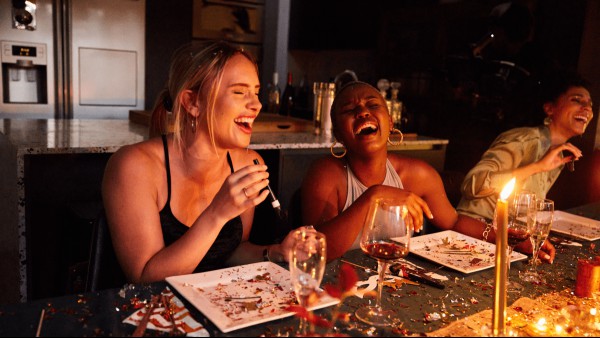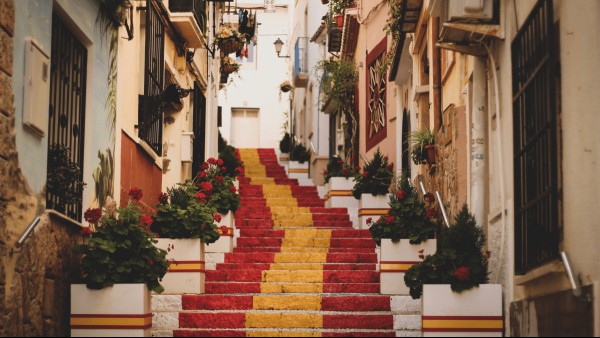What Language Is Spoken In Jamaica?
Jamaica’s linguistic heritage is as vibrant and colorful as its culture, reflecting a rich tapestry of historical influences and cultural resilience. While English is the official language of Jamaica, the true heartbeat of Jamaican communication is found in Jamaican Patois, also known as Patwa or Jamaican Creole.
This unique language is more than just a dialect: it’s a living testament to Jamaica’s complex history and the creative spirit of its people. For travelers exploring Jamaica or anyone seeking to connect with Jamaican culture, understanding the basics of Jamaican Patois opens a door to authentic experiences and deeper cultural connections.
“How did Jamaicans come to talk as they do?” writes Frederic G. Cassidy in Jamaica Talk. “The musical lilt and staccato rhythms, the mingling of strange words, the vowel sounds that go sliding off into diphthongs, the cheerful defiance of many niceties of traditional English grammar, the salty idioms, the wonderfully compressed proverbs, the pungent imagery of nicknames and epithets in the bestowal of which these islanders appear to be peculiarly adept — where do all these hail from, and how did they come to be?”
7 Key Insights About Jamaican Languages
1. Official Language: Jamaican English
English is the official language of Jamaica, serving as the primary medium for government affairs, education and formal business. As a holdover from the country’s colonial history, Jamaican English largely follows British grammar and spelling conventions, though it has been increasingly influenced by American English in recent decades.
Interestingly, certain aspects of Irish intonation have also carried over to Jamaican English, reflecting the fact that the Irish represent the second-largest ethnic population in Jamaica. However, it’s important to note that most Jamaicans do not speak standard English as their native language. Instead, they typically learn it in school as a second language, with Jamaican Patois being their first language.
2. Predominant Language: Jamaican Patois
Jamaican Patois, also known as Patwa or Jamaican Creole, is the most widely spoken language on the island. While approximately 50,000 Jamaicans speak standard English, an estimated 2.7 million speak Jamaican Patois, making it the true language of everyday Jamaican life.
This English-based creole language emerged during the slave trade era through a unique linguistic fusion. It blends elements from English with influences from West African languages (particularly Akan, Igbo, and Yoruba), as well as contributions from Arawakan (the Aboriginal language of Jamaica), French, Chinese, Portuguese, Irish, Scottish and Spanish.
What makes Patois particularly fascinating is that despite deriving much of its vocabulary from English, it has its own distinct grammatical rules and pronunciation patterns that would be challenging for the average English speaker to understand without some language instruction.
3. Cultural Significance of Jamaican Patois
Jamaican Patois is far more than just a means of communication—it’s a powerful symbol of cultural identity and resistance. During colonial times, Patois served as a way for enslaved Africans to maintain their cultural heritage and communicate among themselves in ways their colonizers couldn’t fully understand.
Though historically treated as a “lower” form of language, Patois has been reclaimed as a language of freedom and independence, embodying the resilience and creativity of the Jamaican people. Today, it is a source of national pride and a vital part of Jamaica’s cultural expression.
Patois features prominently in Jamaican music, particularly reggae and dancehall, which have helped spread the language globally. Artists like Bob Marley introduced Jamaican expressions to international audiences.
4. Minority Languages in Jamaica
While English and Jamaican Patois dominate the linguistic landscape, Jamaica is home to several other languages that contribute to its cultural diversity.
- Arawakan: Jamaica’s only living indigenous language, spoken by the Aboriginal population known as the Taino people. Though the language has had significant influence on Jamaican Patois, it has very few remaining speakers.
- Kromanti: A ritual language with roots in West Africa, particularly related to the Akan language group. It is primarily preserved by the Jamaican Maroons, descendants of escaped enslaved people who established independent communities in the mountains of Eastern Jamaica.
- Jamaican Sign Language: Used by approximately 7,500 people, JSL is largely considered a dialect of American Sign Language. It serves as the primary communication method for Jamaica’s deaf community.
- Konchri Sain: Also known as Jamaican Country Sign Language, this indigenous village sign language is used by a small number of deaf and hearing Jamaicans in the rural southwestern parish of St. Elizabeth. With only about 40 speakers remaining, it is considered highly endangered.
- Immigrant Languages: Small communities throughout Jamaica also speak Portuguese, Spanish, Chinese and Arabic.
5. The Role of Language in Social Contexts
Language in Jamaica often serves as a social marker, with specific languages or language varieties associated with different social contexts and class distinctions. The choice between English and Patois can signal education level, social class and formality of the situation.
In formal settings such as government proceedings and business meetings, standard English predominates. In everyday interactions, markets, homes and social gatherings, however, Jamaican Patois is the language of choice for most Jamaicans.
There’s an ongoing national conversation about the status of Patois, with some advocating for its recognition as an official language alongside English. This debate reflects broader questions about cultural identity, heritage, and self-determination. When former Jamaican Prime Minister Andrew Holness suggested making Spanish a second official language of Jamaica, it sparked controversy as many Jamaicans questioned why Spanish would be recognized before Patois.
6. Jamaican Sign Language
Jamaican Sign Language serves as the primary communication method for Jamaica’s deaf community. With approximately 7,500 users, JSL is largely considered a dialect of American Sign Language, reflecting historical educational connections with the United States.
JSL has developed its own unique characteristics that reflect Jamaican culture and expressions. It incorporates signs for local concepts, foods, places and cultural references that might not exist in other sign languages.
The Jamaica Association for the Deaf plays a crucial role in promoting JSL and advocating for the rights and inclusion of deaf Jamaicans. In recent years, there have been increased efforts to provide JSL interpretation for public events, news broadcasts and government communications, enhancing accessibility for the deaf community.
7. Language Preservation and Evolution
Jamaican languages continue to evolve in response to globalization, technology, and changing social dynamics. Jamaican Patois, in particular, is constantly incorporating new words and expressions while maintaining its core structure and cultural essence.
The rise of digital media and social platforms has given Jamaican Patois unprecedented global exposure. Young Jamaicans at home and abroad use social media to share Patois expressions, music and cultural content, helping to preserve and promote the language.
Formal efforts to document and preserve Jamaica’s linguistic heritage have also increased. Linguists and cultural organizations are working to create dictionaries, teaching materials, and digital resources for Jamaican Patois and minority languages like Kromanti and Konchri Sain.
The question of standardizing written Jamaican Patois remains complex, as the language has traditionally been primarily oral. There are growing efforts to develop consistent writing systems that could support its use in education and literature.
Contextual Background
Historical Influences on Language Development in Jamaica
Jamaica’s linguistic landscape has been shaped by centuries of historical events and cultural exchanges. The island’s original inhabitants, the Taino people, spoke Arawakan languages before European colonization began with the arrival of Columbus in 1494.
The Spanish colonization period (1494-1655) left some linguistic traces, but it was the British colonial era (1655-1962) that most significantly influenced Jamaica’s language development. The massive influx of enslaved Africans from various linguistic backgrounds created the conditions for the emergence of Jamaican Patois as they needed to communicate with each other and with English-speaking colonizers.
After the abolition of slavery in 1834, indentured laborers from India, China and other regions brought additional linguistic influences. The post-independence period has seen increased American cultural influence, affecting both English and Patois usage in Jamaica.
The Evolution of Jamaican Patois and Its Recognition in Contemporary Society
Jamaican Patois has undergone significant evolution since its origins in the 17th century. Initially developed as a necessity for communication among enslaved people from different linguistic backgrounds, it has grown into a full-fledged language with its own grammar, vocabulary, and cultural expressions.
For much of Jamaica’s history, Patois was stigmatized as “broken English” or considered inferior to standard English. However, the cultural renaissance that accompanied Jamaica’s independence movement in the 1960s began to change attitudes toward Patois. Reggae music, literature, and other art forms embraced Patois as an authentic expression of Jamaican identity, helping to elevate its status.
Today, while debates continue about its official recognition, Jamaican Patois is increasingly celebrated as a valuable cultural asset. Some schools now incorporate Patois awareness in their curriculum, and there are growing calls for bilingual education that acknowledges both English and Patois as legitimate languages for learning.
Q&A Section
What are the main differences between Jamaican English and Jamaican Patois?
While Jamaican English follows standard English grammar and pronunciation with some regional variations, Jamaican Patois has its own distinct grammatical structure, vocabulary, and sound system. Key differences include:
- Grammar: Patois simplifies many grammatical features of English. For example, it often omits the verb “to be” and uses a system of pre-verbal markers to indicate tense rather than changing verb forms.
- Pronunciation: Patois has a unique phonology, often dropping certain consonants and altering vowel sounds to create its distinctive rhythm and flow.
- Vocabulary: While much of Patois vocabulary derives from English, it includes many words from African languages and other sources that don’t exist in standard English.
- Syntax: Word order and sentence structure in Patois can differ significantly from standard English patterns.
How did Jamaican Patois develop?
Jamaican Patois emerged in the 17th century during the British colonization of Jamaica and the transatlantic slave trade. When enslaved Africans from various linguistic backgrounds were brought to Jamaica, they needed to communicate with each other and with their English-speaking colonizers.
This contact situation led to the development of a pidgin (simplified communication system) that eventually evolved into a creole language as children acquired it as their first language. Over generations, Jamaican Patois developed its own stable grammar and expanded vocabulary, incorporating elements from English, West African languages, Arawakan and other European languages.
The language continued to evolve after emancipation, incorporating new influences and adapting to changing social conditions while maintaining its core features.
Are there resources for learning Jamaican Patois?
Yes, several resources are available for those interested in learning Jamaican Patois:
- Books: Understanding Jamaican Patois by L. Emilie Adams and Llewelyn Dada Adams, Jamaican Patois by Andre Cuffe and Dictionary of Jamaican English by F.G. Cassidy and R.B. Le Page
- YouTube Channels: Several content creators offer free Patois lessons and cultural context, such as Chat Patwah and Jamaican Patwah
- Cultural Immersion: Visiting Jamaica and engaging with locals provides authentic learning opportunities
- Music and Film: Reggae, dancehall and Jamaican films offer exposure to authentic Patois usage
What are some examples of Jamaican Patois?
Learning a few key phrases in Jamaican Patois can enhance your connection with Jamaican culture. Here are some essential expressions:
Greetings and Common Expressions
- Wah gwaan — What’s going on?
- Mi deh yah — I’m here / I’m okay
- Bless up — Greetings / to wish someone well
- Respek — Respect (showing appreciation)
- One love — A greeting expressing unity and goodwill
Farewells
- Walk good — Take care on your journey / Goodbye
- Likkle more — See you later
- Inna di morrows — See you tomorrow
Expressions of Surprise or Amazement
- Lawd a massi! — An expression of disbelief or amazement
- Jeezam peez! — OMG! / An expression of surprise (Jamaican slang for “Jesus peace”)
- Blow wow! — Wow, unbelievable!
Everyday Phrases
- Irie — Everything is good / I’m feeling great
- Ya mon — Yes / No problem
- Mi soon come — I’ll be right there (though this could mean anywhere from minutes to days)
What role does language play in Jamaican cultural identity?
Language is a fundamental aspect of Jamaican cultural identity, serving multiple important functions:
- Cultural Expression: Jamaican Patois enables unique forms of expression that capture the island’s history, values, and worldview.
- Resistance and Resilience: Throughout history, Patois has served as a form of resistance against colonial domination and a symbol of cultural resilience.
- Community Building: Shared language creates bonds among Jamaicans both on the island and throughout the diaspora.
- Artistic Creation: Jamaican music, literature, and oral traditions rely heavily on the expressive capabilities of Patois.
- National Pride: Despite its complex status, Patois is increasingly celebrated as a unique cultural achievement and source of national pride.
The continued use and evolution of Jamaican Patois, alongside the preservation of minority languages like Kromanti, reflects Jamaica’s commitment to maintaining its rich cultural heritage while engaging with the modern global community.





